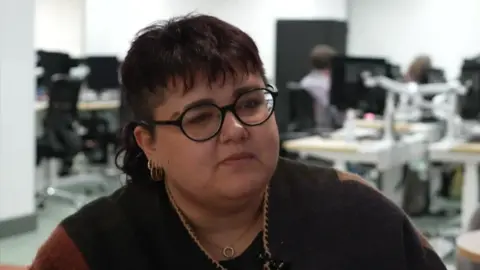Business
CPEC-II: action, not rhetoric, will deliver | The Express Tribune

ISLAMABAD:
A few days ago, Prime Minister Shehbaz Sharif met with President Xi Jinping, with China-Pakistan Economic Corridor (CPEC) high on the agenda. The leaders agreed that, building on past successes, it was time to give new momentum to CPEC’s implementation.
Both sides decided to accelerate work on the second phase and align CPEC, Pakistan’s economic backbone, with the five corridors and Uraan Pakistan, built around the Five Es – Export, Energy, Equity, Environment, and Education. To guide future actions, an Action Plan was issued after the meeting.
However, before moving to implementation, Pakistan must first “prioritise its priorities.” Based on the Action Plan and related discussions, a few suggestions can guide policymakers and implementers.
The first step is identifying the top priority. While both industry and agriculture are vital, given Pakistan’s current situation, agriculture must come first. It is the most critical sector, deeply linked to all others, and essential for achieving inclusive development.
Agriculture contributes 23.54% to GDP and employs 37% of the labour force. It supplies raw materials to industries such as textiles, food, and leather, and contributes directly to foreign reserves through exports like rice. Yet, it faces serious challenges, including climate change, water scarcity, and low productivity, among others.
Climate change affects water availability and quality, and extreme weather patterns are worsening the situation. Low seed quality and poor inputs reduce productivity and farmer income, deepening poverty in rural areas. This sector, therefore, deserves urgent attention and top priority under CPEC-II.
Collaboration should focus on climate-smart farming, quality seed production, efficient water management, and input manufacturing. The government should create small, effective programmes to attract targeted funding in these areas and speed up the establishment of nine agriculture research centres under CPEC.
Cooperation must balance business-to-business (B2B) corporate farming with government-to-government (G2G) partnerships. Promoting corporate agriculture is necessary, but policies must also protect small farmers, who form the majority.
Around 89-90% of farms are smaller than 12.5 acres. Of these, 1.25 million are less than 1 acre, 2.3 million are under 2.5 acres, and 1.7 million are below 5 acres, together representing 64% of all farms. Poverty levels are highest among them.
Thus, agricultural cooperation should be divided into two categories: growth-focused and development-focused. Growth can be achieved through B2B corporate farming, while development should rely on G2G cooperation. (Further guidance can be found in a concept paper written for the CPEC Authority.) Pakistan must proceed carefully; unchecked corporate farming could prove counterproductive.
Industrial cooperation is another key CPEC pillar that requires careful handling to deliver results. Pakistan should adopt a two-step industrial policy: 1) supply chain inclusion, and 2) joint ventures.
This approach is needed due to the mismatch between Pakistani and Chinese companies. Pakistan’s economy depends heavily on small and medium-sized enterprises (SMEs), most of which cannot immediately engage in joint ventures. However, there are numerous areas where Pakistan can integrate into Chinese supply chains.
For instance, China is now a leading producer of electric vehicles (EVs) and related technologies. Pakistani companies that manufacture quality nuts, bolts, and small parts could be included in these supply chains.
Pakistan can request that China open opportunities for local SMEs to supply components for Chinese EV producers. This would strengthen Pakistan’s SME base, increase foreign reserves, and create jobs. Similar opportunities exist in other sectors as well.
To further strengthen exports, Pakistan must pursue brand development under CPEC-II. The country produces some of the world’s best goods but struggles to build global brands. Pakistan is globally known for high-quality sports goods like FIFA footballs, and for cutlery and surgical instruments.
However, these products often reach international markets through foreign intermediaries, reducing profits and visibility. Many Pakistani sports goods and surgical tools, for instance, are sold in Africa under German labels.
The main reasons are limited financing and technology gaps, which prevent Pakistani firms from competing with established global brands. Combining Pakistani craftsmanship with Chinese capital and technology could produce globally competitive brands, creating jobs and export potential.
In developing joint ventures, Pakistan should leverage its State-Owned Enterprises (SOEs) to address the structural mismatch with Chinese firms. Two options are possible: joint ventures between Pakistani SOEs and Chinese private firms, or between SOEs from both countries.
Ideal Pakistani partners include the Railways, Pakistan International Airlines (PIA), and Steel Mills. These ventures could revive struggling public entities and modernise key industries.
Science and technology are also central to CPEC-II. Pakistan must aim to turn this cooperation into a source of hard power, not merely soft power. That means building the capacity to produce technological products and machinery domestically. Pakistan should focus on developing firms that manufacture ICT equipment and industrial machinery, positioning itself as a regional innovation hub.
To achieve this, Pakistan needs to focus on two priorities. First, create opportunities that enable knowledge generation, the foundation of innovation. Second, build the infrastructure for world-class research and development (R&D), backed by strong financial support.
Pakistan and China can jointly encourage private business groups to invest in R&D. Chinese private companies are now among the world’s largest R&D spenders, offering valuable partnership opportunities. However, all such initiatives must operate strictly on merit.
In conclusion, Pakistan must internalise one lesson from CPEC Phase-I: only performance matters, not promises. Less talk and self-promotion, more work and delivery, should define this phase. Effective policies, detailed work plans, and timely execution will matter far more than rhetoric. Success itself will be the best promotion for all those involved.
THE WRITER IS A POLITICAL ECONOMIST AND VISITING RESEARCH FELLOW AT HEBEI UNIVERSITY, CHINA
Business
Novo Nordisk cuts sales and profits guidance amid obesity drug competition

The drugmaker behind Ozempic and Wegovy has cut its sales and profit targets in the face of intense competition from other weight-loss and diabetes treatments.
Novo Nordisk warned over weaker-than-expected profits amid the recent growth of US rival Eli Lilly’s Mounjaro and Zepbound injection treatments.
The boss of the Danish pharmaceutical firm linked its reduced guidance to the market for weight-loss treatments being “more competitive than ever”.
Mike Doustdar, chief executive of Novo Nordisk, said: “While we delivered robust sales growth in the first nine months of 2025, the lower growth expectations for our GLP-1 treatments, for diabetes and obesity, have led to a narrowing of our guidance.”
The firm said sales are set to rise by up to 11% this year. It had previously guided towards growth of up to 14%.
It also reported that operating profits will rise by up to 7% this year, pulling down its previous guidance of up to 10%.
It came as the business reported that sales in its diabetes and obesity care division grew by 12% in Danish kroner, or 15% at constant currency rates, over the first nine months of 2025.
This included a stronger performance across obesity, with 7% growth in the diabetes-focused part of the division, which includes Ozempic.
Meanwhile, operating profits grew by 5%, or 10% at constant currency rates, for the year so far.
It said this included a nine billion kroner (£6.7 billion) impact from one of restructuring costs.
This came after the company launched a major overhaul in September, which included plans to cut around 9,000 jobs globally.
Mr Doustdar added: “Our company-wide transformation has already driven operational efficiencies, and we have a renewed focus that can deliver a range of potential treatment options that will serve millions more patients, mainly in obesity.
“We aim to accelerate on all fronts to be able to compete better in dynamic and increasingly competitive markets.”
Business
Britain sliding ‘into economic crisis’ over £85bn sickness bill, ex-John Lewis boss warns

Emer MoreauBusiness reporter
 Getty Images
Getty ImagesThe number of sick and disabled people out of work is putting the UK at risk of an “economic inactivity crisis” that threatens the country’s prosperity, according to a new report.
There were 800,000 more people out of work now than in 2019 due to health conditions, costing employers £85bn a year, according to the review by former John Lewis boss Sir Charlie Mayfield.
The problem could worsen without intervention, but Sir Charlie, who will lead a taskforce aimed at helping people return to work, said this was “not inevitable”.
The move has been broadly welcomed, but some business groups said Labour’s Employment Rights Bill included some disincentives to hiring people with existing illnesses.
One in five working age people were out of work, and not seeking work, according to the report, which was commissioned by the Department for Work and Pensions but produced independently.
Without intervention, another 600,000 people could leave work due to health reasons by the end of the decade.
Sir Charlie said sickness cost employers £85bn a year through issues including lost productivity and sick pay, but it also cost the broader economy.
“Work is generally good for health and health is good for work,” he told BBC Breakfast.
He added that the rise in sickness was being driven by a “surge” in mental health issues among young people and muscular skeletal issues, aches and joint pain in older people that was leading them to leave work.
“For employers, sickness and staff turnover bring disruption, cost and lost experience,” he said. “For the country, it means weaker growth, higher welfare spending and greater pressure on the NHS.”
Illness-related inactivity costs the UK economy £212bn annually, by some estimates, or nearly 70% of income tax, through lost output, increased welfare payments and additional burdens on the NHS.
The independent Office for Budget Responsibility has forecast that the bill for health and disability benefits for working age people alone is set to rise to about £72.3bn in 2029-30.
People could be encouraged to stay in work if health is viewed as “a shared responsibility between employers, employees and health services”, he said.
Sir Charlie added his taskforce would work with GPs who say they find it difficult to judge whether or not a person is suitable to work while they are ill, but are asked to issue sick notes by patients.
The report comes as the government tries to move ahead with its Employment Rights Bill – which some businesses say will stifle growth.
The proposed new law includes a right to guaranteed hours and cracks down on zero-hour contracts without the offer of work.
Retailers understand the importance of supportive workplaces, chief executive of the British Retail Consortium Helen Dickinson said, adding that many already invest in programmes to support workers with ill health or disabilities.
However, she said the government’s goals and its policies, such as the Workers Rights Bill, were “at odds with one another”.
“While encouraging employers to invest in workforce health and provide flexibility, they risk making it more difficult,” she said.
“In its current form, the Employment Rights Bill would make it harder for retailers to continue offering as many crucial flexible roles.”
Chancellor Rachel Reeves is also aiming to guarantee paid work to young people who have been out of a job for 18 months.
Those who do not take up the offer could face being stripped of their benefits.
‘I want to find a job’
Loz Sandom has mental and physical health conditions which has made it difficult to find a job, and the last time they worked was a year ago.
“I am willing to do the work, and I want to. I want to find a job,” said the 28-year-old, who has a degree in illustration and has previously worked as a digital marketing executive.
With support from the charity Scope, Loz is looking for an employer willing to accommodate the adjustments they would need in a workplace.
Loz said that part of the challenge was employers did not realise they had “a duty to provide reasonable adjustments”.

“It’s such a shame because they’re missing out on so many fantastic disabled people that can do fabulous jobs.
“And I’m not blaming employers entirely. They need support as well,” Loz added. “There are things that can be put in place to help employers, help save people.”
Responding to the report, the government announced a major partnership with over 60 companies, many of them large employers, to “tackle the rising tide of ill-health that is pushing people out of work”.
The companies include Tesco, Google UK, Nando’s and John Lewis.
Over the next three years, they will “develop and refine workplace health approaches” which aim to “reduce sickness absence, improve return-to-work rates, and increase disability employment rate”.
The government is aiming to develop these changes into a voluntary certified standard by 2029.
Speaking to the BBC, Work and Pensions Secretary Pat McFadden said the report was a “win-win for employees and employers because it’s aimed at keeping people with sickness issues or developing disability issues in work”.
“That’s in the interests of employers because these are good experienced staff and it’s in the interests of employees too because most people want to stay in work if they possibly can.”
The Resolution Foundation think tank’s chief executive Ruth Curtice said: “The review has accurately identified a culture of fear, a dearth of support and structural barriers to work as key challenges to overcome in turning the tide for Britain’s economic inactivity problem – which is currently trending in the wrong direction.”
The CIPD, which represents HR professionals, welcomed the government’s vision for a preventative approach to illness in the workplace.
But its chief executive Peter Cheese said: “The report’s success will depend on the extent to which these recommendations are understood by business in driving positive outcomes and backed by policy makers at a national and regional level.”
Dr Roman Raczka, president of the British Psychological Society, welcomed a shift towards “rehumanising the workplace” but noted that “not everyone will be clinically well enough to be considering a return to employment”.
“While being in employment can improve a person’s mental health and wellbeing in certain circumstances, it is vital that we should adopt a thoughtful approach to those too sick to work.
“The workplace itself can be a root cause of poor mental health.
“Those signed off with sickness, deserve timely access to safe and compassionate care, with support from psychologically informed mental health professionals.”
With additional reporting from Erica Witherington

Business
‘Benchmark for countries’: FATF hails India’s asset recovery efforts; notes ED’s role in returning defrauded funds – The Times of India

NEW DELHI: The Financial Action Task Force (FATF) acknowledged India’s efforts in recovering public assets lost to financial crimes, highlighting a money laundering case where land confiscated by the Enforcement Directorate (ED) was identified for the construction of a new airport that would serve the public.The acknowledgment comes in FATF’s latest 340-page report titled ‘Asset Recovery Guidance and Best Practices,’ cited by PTI, which documents how countries can strengthen their systems to trace, freeze, manage and return proceeds of crime. The Paris-based FATF sets global standards for combating money laundering and terrorist financing.“The report outlines practical measures for policy makers and practitioners to identify, trace, freeze, manage, confiscate and return assets derived from criminal activity…” it said. “The guidance serves as a benchmark for countries to enhance their national frameworks and align with emerging best practices,” the Enforcement Directorate (ED) said in a statement.The report references several ED investigations involving recovery and restoration of assets to victims. These include the alleged Rose Valley Ponzi scheme, a drug trafficking case where the US sought India’s assistance leading to seizure of Bitcoins worth Rs 130 crore, and coordination between the ED and Andhra Pradesh Police CID to restore Rs 6,000 crore to victims of an alleged investment fraud.Another case cited involves the alleged diversion of public funds in a Maharashtra-based cooperative bank. The ED restored benami assets worth Rs 280 crore to compensate affected account holders after auctioning the properties. According to officials, the report noted that the confiscated properties “have been identified as a site for construction of new airport, to build infrastructure in India for the benefit of society at large”.“The contribution of India and the ED to this global effort has been substantial and widely acknowledged,” the agency said, as quoted by PTI. It added that India’s legal framework under the Prevention of Money Laundering Act (PMLA), along with operational experience, shaped key aspects of the global guidance related to value-based confiscation, provisional attachment and inter-agency coordination.The ED said the inclusion of Indian case studies “underlines the credibility of India’s enforcement mechanisms and the value of its experience in shaping future global standards.”According to FATF, the guidance aims to bring “tangible” improvement in the confiscation and return of criminal assets by enforcement agencies worldwide.
-

 Tech1 week ago
Tech1 week agoOpenAI says a million ChatGPT users talk about suicide
-

 Tech1 week ago
Tech1 week agoUS Ralph Lauren partners with Microsoft for AI shopping experience
-

 Tech1 week ago
Tech1 week agoHow digital technologies can support a circular economy
-

 Sports1 week ago
Sports1 week agoBilly Bob Thornton dishes on Cowboys owner Jerry Jones’ acting prowess after ‘Landman’ cameo
-

 Tech1 week ago
Tech1 week agoAI chatbots are becoming everyday tools for mundane tasks, use data shows
-

 Fashion1 week ago
Fashion1 week agoITMF elects new board at 2025 Yogyakarta conference
-

 Tech1 week ago
Tech1 week agoHere’s How Many People May Use ChatGPT During a Mental Health Crisis Each Week
-

 Business1 week ago
Business1 week agoLucid targets industry-first self-driving car technology with Nvidia







